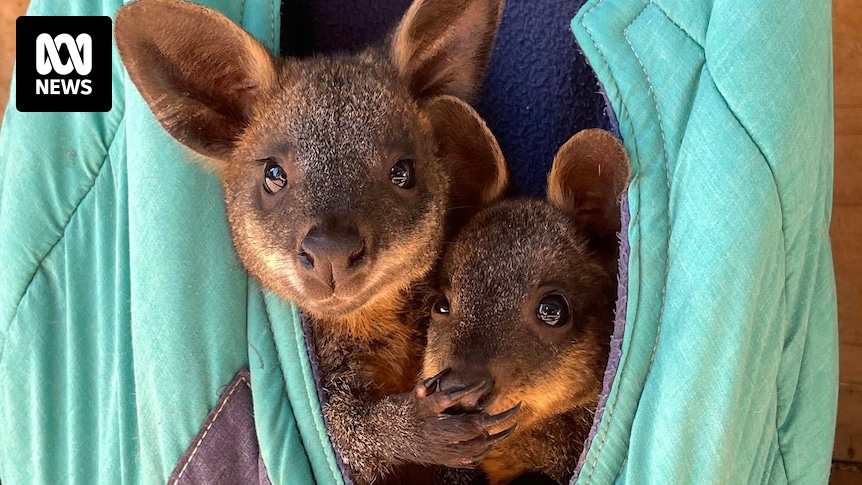Six weeks on from devastating bushfires that ripped through part of Western Victoria, wildlife carers say the impact on already stressed native wildlife is heartbreaking.
Warning: some images in this article may be distressing to readers.
On February 22, the Bayindeen bushfire tore through the Mount Buangor State Park and surrounds, destroying 22,000 hectares and decimating seven homes.
The Country Fire Authority and Victoria Police are still investigating the cause of the fire, but have previously said investigators do not believe the blaze was caused by a campfire or lightning.
While it is home to many native Australian animals, Mount Buangor State Park is best known for supporting echidnas, kangaroos, wallabies and koalas.
Volunteer wildlife rescuer and veterinarian-nurse India Armstrong has been working tirelessly to do what she can for animals injured in the bushfire.
“Out there is absolutely horrific — the whole state park is pretty much decimated,” Ms Armstrong said.
“There is just so many wounded animals. Even the animals we think might be okay, by the time we are able to get someone in with a dart gun to sedate and assess, they’ve got such severe burns.”
Euthanasia required for many animals
Ms Armstrong, from Central Goldfields Wildlife Rescue, said immediately after the fire, the Department of Energy, Environment and Climate Action rescued “what they could”.
“Unfortunately, the reality is many of these animals require euthanasia — but we are continuing to go in there,” she said.
“Six weeks is sort of the peak time for animals to be coming out if they’re wounded.
“The hotspots are all under control but wildlife are going to be coming out for weeks if not months from now.”
The main species caught in the bushfire were kangaroos, but many other species have also been injured.
“We have found burnt lizards, echidnas that have escaped and got away unscathed, we have deer,” Ms Armstrong said.
“Deer aren’t normally something we go out for, but obviously we don’t want any animals suffering.”
Greater predator access
Federation University ecologist Grant Palmer said the Mount Cole and Mount Buangor area was “interesting in terms of species distribution”.
“Species like mountain brushtail possum … dusky antechinus is another one, powerful owl, they do occur in that forest block,” Dr Palmer said.
“We will have species in the landscape who have survived the fire, but who will now suffer indirect impacts like habitat loss and increased predation.
“We know that predators have far greater access — and that’s introduced predators like cats and foxes – in burnt landscapes, because they can move through them more easily.”
Dr Palmer said it was especially important after the fire to be aware of increased movement of wildlife in the region.
“There may be things like increased wildlife by roadsides,” he said.
“The species that did survive the fire are really vulnerable.”
Species already under pressure
Dr Palmer said the fire decimated many of the species’ natural habitats, which were already under threat from the flow-on effects of climate change.
“Species in that landscape are already under pressure,” he said.
“There’s been huge habitat loss across Western Victoria historically, that’s through timber harvesting, and converting areas for grazing.
“It does cause that fragmentation when a fire like this happens.
“We have wildlife impacted by that fire, but we also have wildlife that survive that fire … they’re the seeds for future wildlife generations.”
The Department of Energy, Environment and Climate Action has been contacted for comment, along with the Conservation Regulator.
Get our local newsletter, delivered free each Wednesday
